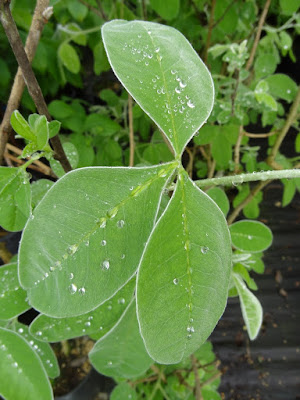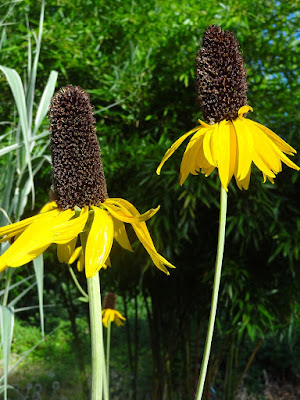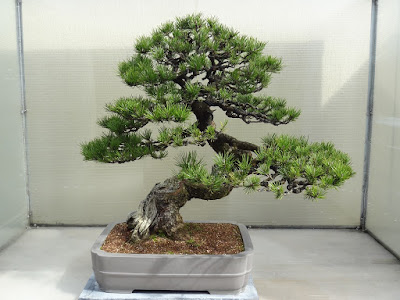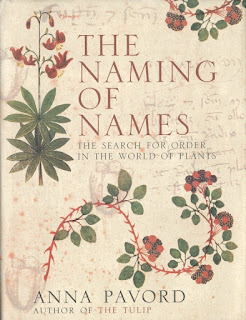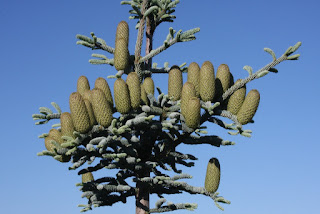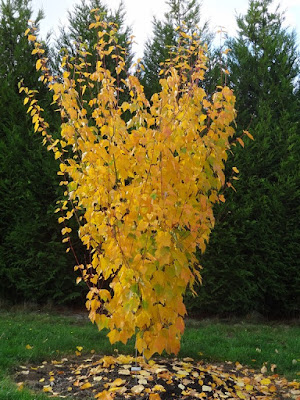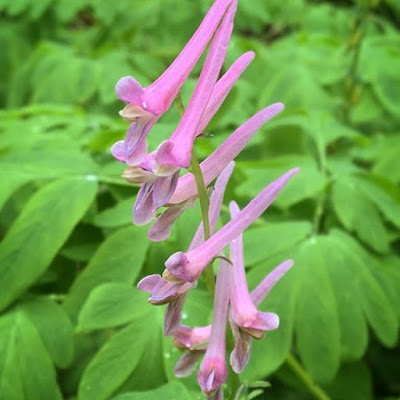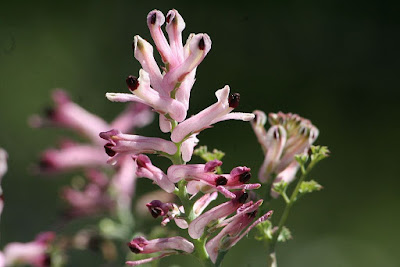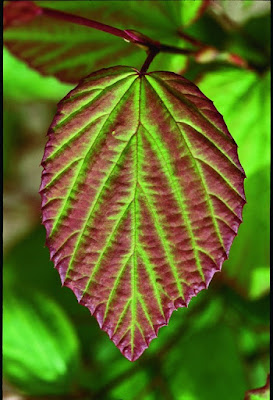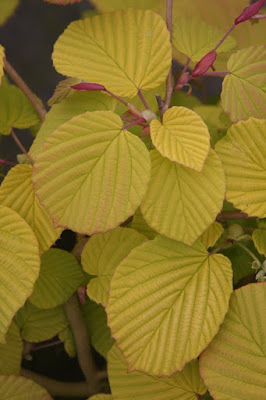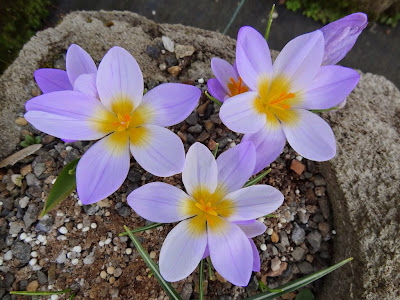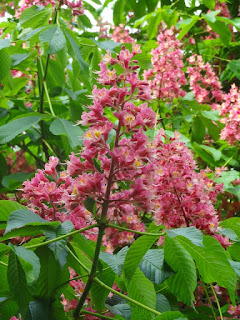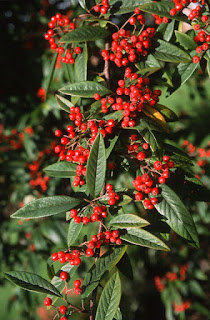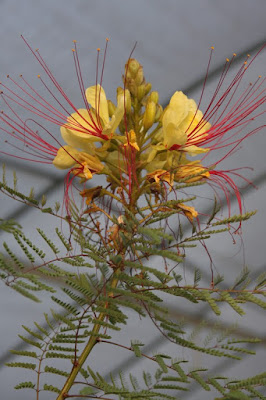Today, as you read this Flora Wonder Blog, know that it is a rerun from about five years ago. I am now on a long road trip with my family which you may or may not read about in the future. I wonder if my sojourn is a subconscious urge to seek out a humble shack in the wilderness where I can ride out the End of the World? I have already received more than my money's worth of happiness in my life, but I certainly do worry about yours and my children. Sorry...kids.
------------------------------------------------------------------------------------------------------
Twenty five years ago I took a solo trip to the Olympic Peninsula of Washington state, my first ever visit to the very-most northwest corner of the contiguous states in our Union. The center of this large area is dominated by the snowy glacier-clad Olympic Mountains, and those are topped by Mt. Olympus at 7,980' in altitude. It was observed in 1774 by Spanish explorers led by Juan Perez, and he chose the name of Cerro Nevada de la Santa Rosalia, but four years later the English captain John Meares was so impressed with it that he renamed the peak Mount Olympus because it resembled a “god-like paradise.” Of course the Englishman's name stuck, but why did any of these arrogant Europeans feel privileged to rename a mountain in America, for Native Americans already had the name of Sunh-a-do? Just as with plants, the first name counts, and I think that the least that our Federal Government's Department of Whatever could do is to provide the original name along with the Euro rename.
![]() |
| Acer macrophyllum |
Quite a number of river drainages exist as the melted snow, glaciers and heavy rains send water to the west...into the Pacific Ocean. I think I was initially inspired to visit the area by a magazine article about the Hoh River Valley, in particular with its trail that was called the “Hall of Mosses.” In my exuberant youth I drove the four hours north-by-northwest and arrived there at 9:30 in the morning, and I found myself to be at least two hours ahead of anyone else. I had the “Hall” to myself and I devoured the greenery by myself, and the photo (above) of the Acer macrophyllum adorned with the jewel of the fern, Polystichum munitum, was one of the best of all of my memories. At the time I vowed to revisit this incredible temperate rainforest every fall/winter to document its existence and evolvement, and I was blessed to be in a position to do so.
Every year turned into “well, not this year” because...because...because. Why/how could I have submitted to a life out of my own control? Family and business concerns, as well as my own laziness had intervened, and I carried this self-imposed guilt for two and a half decades. It was not like an expedition to Mars, or to Patagonia even, but rather just a trip to Oregon's neighboring state's northwest corner. Thoroughly ashamed of myself, I announced to my wife that I was leaving, that I had to go, and I would do so the day after the Thanksgiving holiday. Haruko was supportive – she always is. But that morning she was sick, tired and worn-out from preparing and serving three major dinners in five days, plus dealing with the girls' hectic dance preparations for the Nutcracker ballet...and then with me with all of my burdening stuff...and, and, and and.
![]()
![]()
![]()
In short I left with a late start. My plan was to circle the peninsula counter-clockwise and I hoped to get to the top, to Sequim (rhymes with “swim”) or perhaps further to Port Angeles, two towns I had never been to before. Sequim is in the rain shadow of the Olympics and it actually receives less rainfall per year than Los Angeles, California. Nevertheless it was raining and dark, but I decided to press on to Port Angeles. I wanted to explore the town, but thought I should do so in the morning, but it turned out that then it was still raining hard. I confess that all photos above were taken out of my car window.
![]()
A short distance from my hotel was a National Forestry Center where I picked up a map. I also wanted to acquire a Senior Pass, a card that allows old-timers to get into parks and onto trailheads for free. And we deserve it when you consider how much we have paid into the federal government. There were three bureaucrats at the Center, with two of them helping other citizens. I addressed the third – a 50 year old woman – who was busy shuffling papers, and I said that I wanted to get a Pass. She glared at me as if she had better things to do, then snarled, “Do you qualify?” I quipped that even though I didn't look old enough, indeed I did qualify. I thought my comment would elicit a smile but she remained stone-faced and I then decided that I would stop trying to be nice. For $10 I got my Pass, then before I left I said that you were supposed to be able to apply for one on-line. I told her that I filled out the application a year ago, then the government is supposed to review it and send a Pass. She looked at me like I would be too dumb to fill out an application online, and in truth she was right, but I had Seth do it and he's a hell of a lot smarter than this hag. I asked her what was the point of an online system if nobody gets back to you? Silence. I commented, “That's sooo governmental, isn't it?” The other attendants glanced up at me, and I'm sure they were all relieved when I finally left.
![]() |
| Lake Crescent with Pyramid Mountain |
![]() |
| Arbutus menziesii |
![]() |
| Arbutus menziesii |
Still raining, I headed west across the top of Washington on Hwy 101. One soon encounters Lake Crescent*, and I pulled into a parking area because at lake-edge I saw an attractive madrone tree, Arbutus menziesii. I wasn't the first to encounter the tree for “Danny did Debbie” was carved into the trunk, as well as other idiotic hearts with initials. Hopefully Debbie dumped Danny because only a male, I think, would scar a tree trunk. If I caught anyone doing it I would be inclined to carve “dumb shit” onto his forehead.
*The lake reaches a depth of 600' and it was carved out during the Ice Ages.
I'll admit to being a little grumpy, or at least melancholy, and felt somewhat guilty to have left my family. Also I was unhappy that I actually did qualify for a Senior Pass. I drove on and on without the radio or any music, just an old man alone with his thoughts. Hwy 101 passes through the dreary town of Forks, so-named due to its position amongst a couple of rivers. Logging used to support the town but I don't know what sustains it anymore. Probably Forks is better known as the location of the movie Twilight, a quirky film about teenage vampires that stars the good-looking Kristen Stewart. I knew about the movie because it fascinated my teenage daughter, even though her mother felt it was too racy at times. At what point do you let your children see and do whatever they want? Haruko asks when she should stop being a helicopter (hovering) mom?
![]()
![]()
![]()
![]()
![]()
![]()
![]()
At the edge of town I drove past the Forks Timber Museum. An impulse caused me to brake, spilling stuff onto the car floor, but I thought it was sort of my
duty to see the museum. The attendant was about the same age as crab-cake back at the Forestry Center, but she was far more pleasant, in fact exceedingly so. She followed me throughout the little museum and explained everything. I was amused with logger jargon, like “Fernhopper” for a West coast forester, “Hen Skins” for light summer underwear and “Monthly Insult” for a paycheck. A bashed hard hat was put on display to remind other loggers to be careful. Five minutes is all that is required at the museum, but Ms. Pleasant's intent was to keep me longer, and she even asked me personal questions. I had a scruffy 5-day beard going – I must have looked dreadful – but maybe by Forks' standards I may have looked wonderful to her. When she went briefly into a back room I shouted “Thanks” and made my getaway, glad that she didn't invite herself further on my trip.
![]() |
| The road to Hoh |
Finally I entered the beautiful road into the Hoh Rainforest and my spirits improved. The Hoh River was raging and the landscape was soggy. The area can receive 140 inches of rain per year which is almost twice as tall as I am. I was actually happy that it was raining – I wanted it to rain since I was in a temperate rainforest – and I have absolutely no desire to visit this area in the dry summer. It was already mid-day when I arrived at the visitor center and I was shocked that there were 30 cars in the parking lot. 30 cars means at least 60 kids and everyone was wearing brightly-colored ponchos and raincoats. Just 100 yards onto the trail a 3-year-old boy was crying because he had just wet his pants. His mother was scolding him, asking him why he didn't say something back at the visitor center. Dad just stood there looking stupidly useless. No doubt the rain and the drippy trees triggered a need for him to go, but what's the big problem, just take the kid back to the car and change his clothes. You do have a change of clothes right? You always have a change of clothes for a 3-year-old. Mom?
![]()
![]()
There were just too many kids, loud kids, and their parents were loud too. But it was a Saturday – I should have known better. Oh well, who was I to deny a family their outdoor recreational bonding time? I was dressed for the rain and had good hiking boots. At first I tried to jump over or skirt around the puddles, as some of them were pretty deep, but eventually I gave up on dry feet and just sloshed through. Throughout the park were interpretive signs such as “Coho in the Creek” – which has a nice ring to it. I wanted to sing “Coho in the Creek, such a saucy fellow...Coho on a rainy day.” Another sign explained why 5 or 6 trees were lined up in a row, that they had sprouted atop a fallen “nurse” log, and the mother log had rotted away long ago. My father was no stranger to the woods and he had explained that to me when I was a child, and I have already done so with my children.
![]()
![]()
![]()
![]()
![]()
![]()
![]()
![]()
Green upon green, moss and ferns, all deliciously wet. The creek waters contained a lot of aquatic life as well, and sometimes the water drops created fantastic patterns. In meadows vertical green snags looked like Dr. Seuss creatures with heads adorned with ferns. They say that moss, lichen and ferns don't harm a living tree, but certainly they add extra weight and make them more vulnerable to wind storms. There was no smell of rot or decay, however, even though that is what occurs in a rainforest; but to me everything was sweetly fresh and invigorating. I have previously been to a
tropical rainforest (Amazon) – versus this Hoh
temperate rainforest – and in the former the stench and the humid air was suffocating. It was a crisp 45 F at Hoh, and anyway, everything was bejeweled with water droplets and I couldn't have been more pleased.
![]() |
| Alnus rubra |
Some trees were enormously large, usually hemlocks and Douglas firs, and there was an impressive stand of red alders, Alnus rubra, by the Hoh river edge. I try to imagine the original natives endeavoring to survive in this mossy fern-ridden environment...versus the Native Americans trying to survive in the arid American southwest. Nothing came easy for either group. The Hoh tribe was known as Chala-at and they had their own language. The Hoh River, Chala-at-sit, meant the “southern river” and the Hoh people believed they were created by the shape-shifting “Changer,” K'wati, who went around the world making things as they are today. When K. got to the Hoh River he discovered that the inhabitants were upside-down people and weren't good at anything at all. He succeeded to right them and taught them how to properly catch the nutritious smelt fish etc.
![]() |
| Acer macrophyllum |
Perhaps my primary purpose to return to the Hoh was to reunite with my aforementioned Acer macrophyllum, to observe – just like with me – how we have both changed over time, and would we even recognize each other after 25 years? I trekked to the appropriate area along the “Spruce Trail” and there stood my friend, my girlfriend, or was it her? She had greatly changed: the center Polystichum was gone, ferns at her side had appeared, and overall she had gained weight, but then haven't we all? Really though, I can't be certain if it was the same tree, no matter how much I wanted it to be.
![]() |
| Hoh river |
By 3:30 it was already getting dark in northern Washington so I headed back to the car. The sun was trying to break through in the distance, giving a gleam to the Hoh waters. I was tired and wanted to take the first hotel I came to. I passed the road leading into the Lake Quinault area, even though that is where I would return in the morning. There is a beautiful lodge along the shore where I have stayed with Haruko BC (before children), but I didn't want to pay lodge prices for just myself. I continued south and saw the sign that I was entering the town of Humptulips, where I wanted to stay just for the sake of the narrative, but in only 10 seconds I had driven completely through the town. 38 miles south of the Quinault Road was the twin towns of Hoquiam/Aberdeen, that were separated by a narrow river, but each place looked the same and contained the same people. I found a chain motel that was just two blocks away from a chain Mexican restaurant. Victor was my server and he was attentive and friendly, but he kept calling me “Sir” like I was old enough to be his grandfather. When I returned to the motel I looked in the mirror and discovered that I looked quite seedy, and that maybe the cheerless woman back at the Forestry Center was actually frightened of me.
![]()
![]()
In the morning I raced back north, to the town of Humptulips where I stopped to photograph the sign, and the general store was the only building in town. The name of Humptulips was after a band of the Chehalis tribe that lived in the area, and one source claims the word means “chilly region.” The area that comprises the “town” is 9 square miles with a population in 2010 of 255 souls, so obviously there were a number of shacks and trailers at the end of side roads. The median income for a family was $22,188, so I imagine a lot of people were on the dole. The racial makeup is 79.17% White, 3.24% Native American, 0.93% Asian etc., but I wondered if Haruko lived there what 0.07% of her would be missing.
![]() |
| Lake Quinault |
![]() |
| Lake Quinault Lodge |
The road into Quinault was narrow but beautiful, much as I had remembered it. There were a small number of vacation homes along the shore, and I imagine that moss-scraping from the roofs and window ledges was an annual chore. As for the lake it is huge but boring, and I guess the appeal is primarily for fishing and boating.
As you would suppose, Quinault is an Indian name, and it refers to the “Canoe People” or “People of the Cedar Tree.” The tribe thrived with good fishing and hunting opportunities, and they had time to carve out immense canoes from cedar logs. Lewis and Clark noted that the crafts were “upward to 50 feet long, and will carry 8,000 to 10,000 pounds' weight, of from 20 to 30 persons.”
![]()
Picea sitchensis Champion Tree
My purpose was to revisit the largest spruce tree in the world, and then to hike a nature trail with some of the most enormous conifers in one location. The old spruce, Picea sitchensis, used to vie with a tree near the Oregon coast, but the latter blew down a few years ago. It was not far from the largest maple in the world, located near the town of Jewell, Oregon, but it too blew over. I journeyed to Jewell to pay my respects to the maple, and asked a rustic local if he knew where it was. He grinned and smugly told me that I was too late, that the “sycamore was flat on its ass.” Sycamore-Sitka whatever, go back to trying to get your car started, and later someone else directed me to the correct place. Anyway the Quinault tree looked good and probably will outlive me.
![]()
Pseudotsuga menziesii
The nature trail featured enormous Douglas firs and hemlocks, one giant after another, and one interpretive sign claimed a tree was 300' tall. Looking up at its canopy made me lose my balance, but then I
am getting old. I tried to photograph a colorful alder leaf, or was it a poplar? But my camera wouldn't focus because there was no juice left in the battery. I felt the same way: not much juice left in me either, so I got in the car and drove home. My 10-year-old rewarded me with a big hug and a delicious kiss on my lips, while my 13-year-old teenager just gave me a hug. I had a wonderful trip but I was happy to be home.
![]() |
| Happy to be home |











